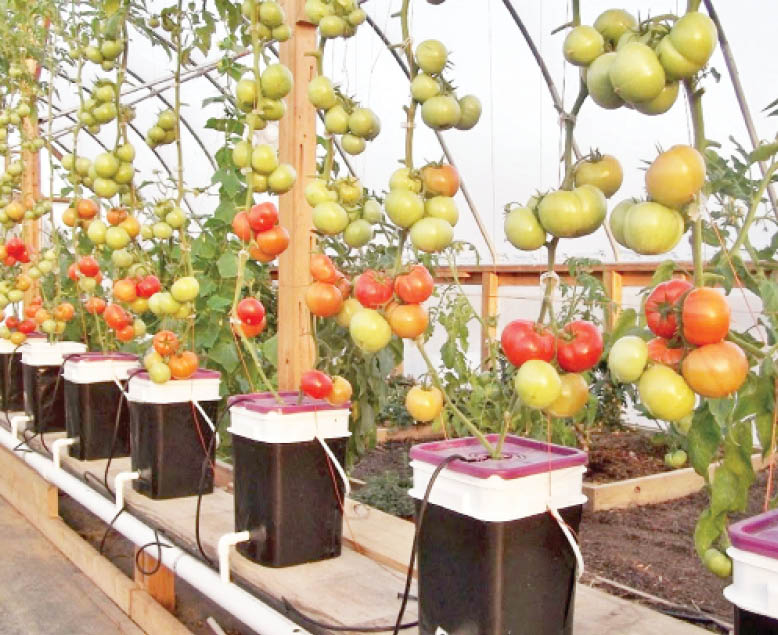While reading an article titled “Why manufacturing remains important” by Canadian economic analyst Vaclav Smil, I fell into a reverie about my dear country Nigeria and the African continent. It is estimated that 43 per cent of Nigeria’s population is below the age of 15. Also, as in Nigeria, 330 million young Africans will be entering the job market looking for work across the continent. Even under the most favourable projections, less than a third will be able to find wage jobs.
I have noted before how farming and informal sector jobs in the agri-food system is a major source of employment and livelihood for these youth. Also, smallholder farming is vital here because it is likely to determine whether millions of young Nigerians are productively engaged in agriculture and the informal sector or whether they join the ranks of the unemployed or underemployed poor. The latter scenario will continue to bring major political risks. Fortunately, policy and public investments can rapidly improve the profitability and attractiveness of agriculture— which remains a major win-win opportunity for not only Nigerian but the African youth, governments, and society.
Beyond that, I also wish we can plan and execute with a view to the much-needed transition of our labour force from farm to non-farm. However, the current situation as far as jobs and economic progress are concerned will not be improved by only focusing on agricultural production in the manner that Nigeria and some African countries focus on it. Manufacturing remains very important, even on the global scale as described by Vaclav Smil whose article I was reading. He made a startling observation that the net balance of international trade in manufactured items indicates two things: the extent to which a nation can satisfy its own need for products; and the demand for its products abroad. He goes on to outline how the usual suspects like Switzerland, Germany, and South Korea have large surpluses, while the United States goods trade deficit often amounts to $891 billion in a single year, or some $2,700 per capita—the price to pay for importing electronics, clothes, shoes, furniture, and kitchen gadgets from Asia. This made me think about Nigeria. What is the true cost of our own trade deficit in goods, seeing that we do import most of our products and what are we really doing about it?
My work in agriculture over the last four years involved working with smallholders and working with stakeholders in order to overcome smallholder isolation. I share and uphold the view of valuing smallholder farmers and supporting their agriculture against their total obliteration in favour of mechanised agriculture. However, I believe we must be systemic in our inevitable departure from smallholder agriculture and improving the lives of people in other non-farm ways as the world continues transforming through various technologies. In our renewed obsession for agriculture and going back to the farm, Nigeria must remember that smallholder agriculture should be a means to a much greater, wholesome end.
Barely 60 years ago, countries like Japan and South Korea were predominantly smallholder farming societies. Today they are giant manufacturing and technology-driven service economies. Like many countries in their league, they concentrated on devising great policies and public investments in infrastructure, agricultural research breakthroughs, and extension services to help farmers benefit from new technologies leading to the smallholder farmers in these countries increasing their productivity and incomes, thereby supporting the demand for nonfarm businesses and the growth of employment opportunities off the farm.
Two brilliant academics T. S. Jayne and Lulama Ndibongo Traub narrated the growth of these countries and argued for keeping rural youth in business in a special issue of Foreign Affairs magazine I came across. They recounted that in japan and South Korea, most smallholder farmers eventually moved into these manufacturing and technology jobs over time. Some commentators have concluded that because economic development is generally associated with the labour force’s transition from farm to non-farm, African leaders should expedite the process by giving up on the romanticized vision of smallholder agriculture and instead favour commercialised large-scale agriculture. Yet large-scale agriculture is usually an extremely weak employer of labour— about one worker per every 100 hectares cultivated of grain production which is, to be very honest, terrible for our massive unemployed population.
An assessment of our state of affairs will acknowledge that even today, Nigerian and other African countries’ population is made up mainly of unskilled and semiskilled rural people who are primarily engaged in farming. While they might wish to put down their hoes and walk into office jobs tomorrow, their levels of education and skills will prevent this from happening quickly. If increasingly populous rural communities are unable to access new land because of increased competition for it from local elites and outside interests, then it is likely that urban squalor and unemployment will be further intensified, risking overwhelming governments’ capacity to cope.
Nigeria’s and indeed Africa’s transformation from a semi-subsistence, small-scale agrarian economy to a more diversified and productive economy will require unwavering support for smallholder farmers so that they are able to participate in and contribute to the region’s economic transition rather than be marginalised by it. While migration from farm to non-farm sectors and from rural to urban areas will provide the brightest prospects for the transformation and modernisation of Africa’s economies, it will happen only as fast as educational advances and growth in the non-farm job opportunities will allow. These advances in turn depend on income growth among the millions of families still engaged in smallholder agriculture. Hence, even as we slowly urbanise, smallholder agriculture will remain fundamental to absorbing much of Africa’s burgeoning young labour force into gainful employment. We must, however, envision beyond this and be prepared to leapfrog in order to gain meaningful and world-class development.
Government policies and public investment can make agriculture much more attractive to young people by making it profitable, not subsidised. Public investments in agricultural research and development, extension programmes, and rural infrastructure will surely help and so will government policies to promote incentives and scope for investment by the private sector. And public efforts to protect the land rights of rural communities can be achieved while also encouraging the development of investor farms and large commercial operations in appropriate locations. Judicious land policies can promote synergies and minimize sacrifices.
However, as we do all these we must also be equally if not more dogged about manufacturing (which by the way could constitute a large part of the agricultural sector). As Vaclav Smil, repeatedly reminds us even in his age, manufacturing is still important for the health of any country’s economy because no other sector can generate nearly as many well-paying jobs as manufacturing can. I also think it is the only way to cover our almost N4 trillion trade deficit in goods which is only rising.

 Join Daily Trust WhatsApp Community For Quick Access To News and Happenings Around You.
Join Daily Trust WhatsApp Community For Quick Access To News and Happenings Around You.



